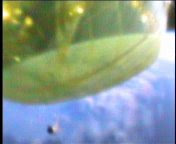---
Dear Friends of ARCHIMEDES and the Mars Society,
MIRIAM was launched to a 175km peak altitude from the SSC ESRANGE rocket test site near Kiruna, North Sweden on October 22nd, 2008. It rode on top of the REXUS4 sounding rocket managed and built by the EoruLaunch Consortium of the DLR Moraba group of Oberpfaffenhofen, Germany and ESA.
Unfortunately, after a trouble-free testing period leading up to a picture perfect launch, one of MIRIAM's main interlock bolts jammed upon release. Miriam therefore got stuck on the rocket, which subsequently led to the balloon's clamp ring to get stuck as well.
With the stuck clamp ring, the inflation systems deck started to pressurize a still packed balloon, until overpressure pushed the inflation hose off the hose clamp assembly.
The flight system finally released from the rocket, but far too late. And with the deployment coil springs almost fully extended, it also came off far too slowly, eventually colliding with the rocket's payload section.
Unintentionally positive however, the collision caused the stuck clamp ring to come off, causing a rapid deployment of our partly pressurized balloon.
Because the balloon is only attached to the inflation systems deck at the inflation hose clamp assembly, the balloon was immediately set free, but with little over 10% of its intended amount of filling gas.
All other subsystems functioned nominally and behaved just like they did during tests.
Despite the fact that the balloon was deployed and released, the mission was deemed only partly successful, as the deployment came unintentionally and uncontrolled, and because the balloon did not carry its intended amount of inflation gas.
The reason why one of the main interlocks failed is a matter of investigation. This behavior was never observed during tests.
All subsystems of the REXUS-4 rocket have worked beautifully, exactly as predicted and right on time. We therefore owe EuroLaunch as well as the entire crew on ESRANGE great thanks for a beautiful flight, their outstanding technical support and a rocket as precise as clockwork.
While at it, we would like to take the opportunity to thank everyone who contributed to this mission, no matter how small the contribution was, since every contribution helped us getting off the pad!
 After the collision knocked off the stuck clamp ring, the partly pressurized balloon deployed rapidly approximately 140km over beautiful Lappland.
After the collision knocked off the stuck clamp ring, the partly pressurized balloon deployed rapidly approximately 140km over beautiful Lappland. Like in a wide-angle passenger side mirror, "objects in a wide angle camera are closer than they appear": The rocket's payload section as seen from MIRIAM. Unfortunately, the distance here is less than 2m. The balloon's diameter is 4m.
Like in a wide-angle passenger side mirror, "objects in a wide angle camera are closer than they appear": The rocket's payload section as seen from MIRIAM. Unfortunately, the distance here is less than 2m. The balloon's diameter is 4m.
Shortly after atmospheric reentry, the camera- and antenna booms were torn off the discarded MIRIAM Service Module by aerodynamic forces, as they were not designed to withstand reentry. Miraculously, a short while into reentry, the right camera boom came on-line again and briefly transmitted pictures as it was dangling on its wire harness. Sunlight can be seen shining through gaps between the now empty balloon compartment and the obviously still working flight computer module. The coil spring is a remnant of the long gone blossom container inside which the folded balloon rode into space.

No comments:
Post a Comment